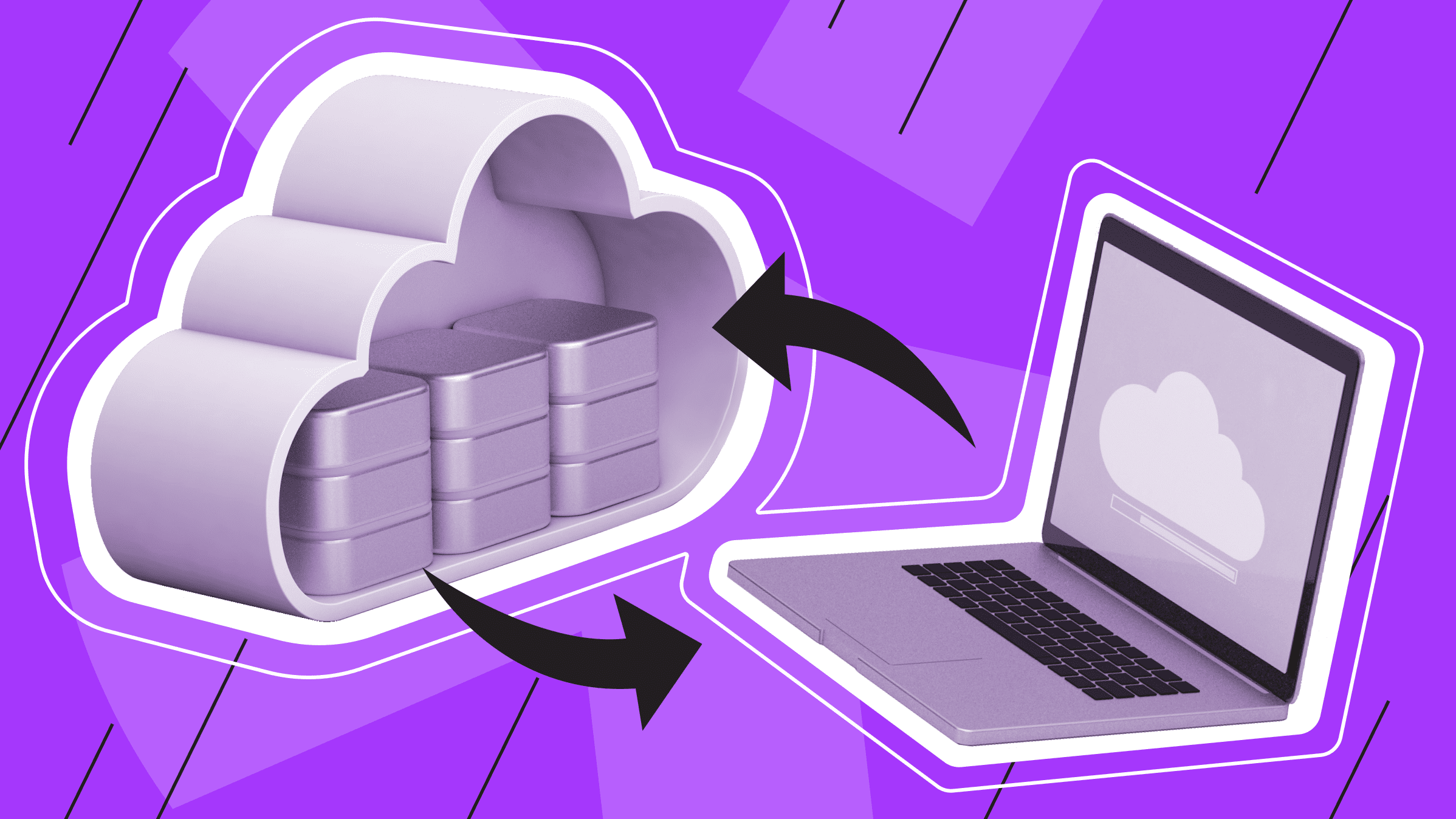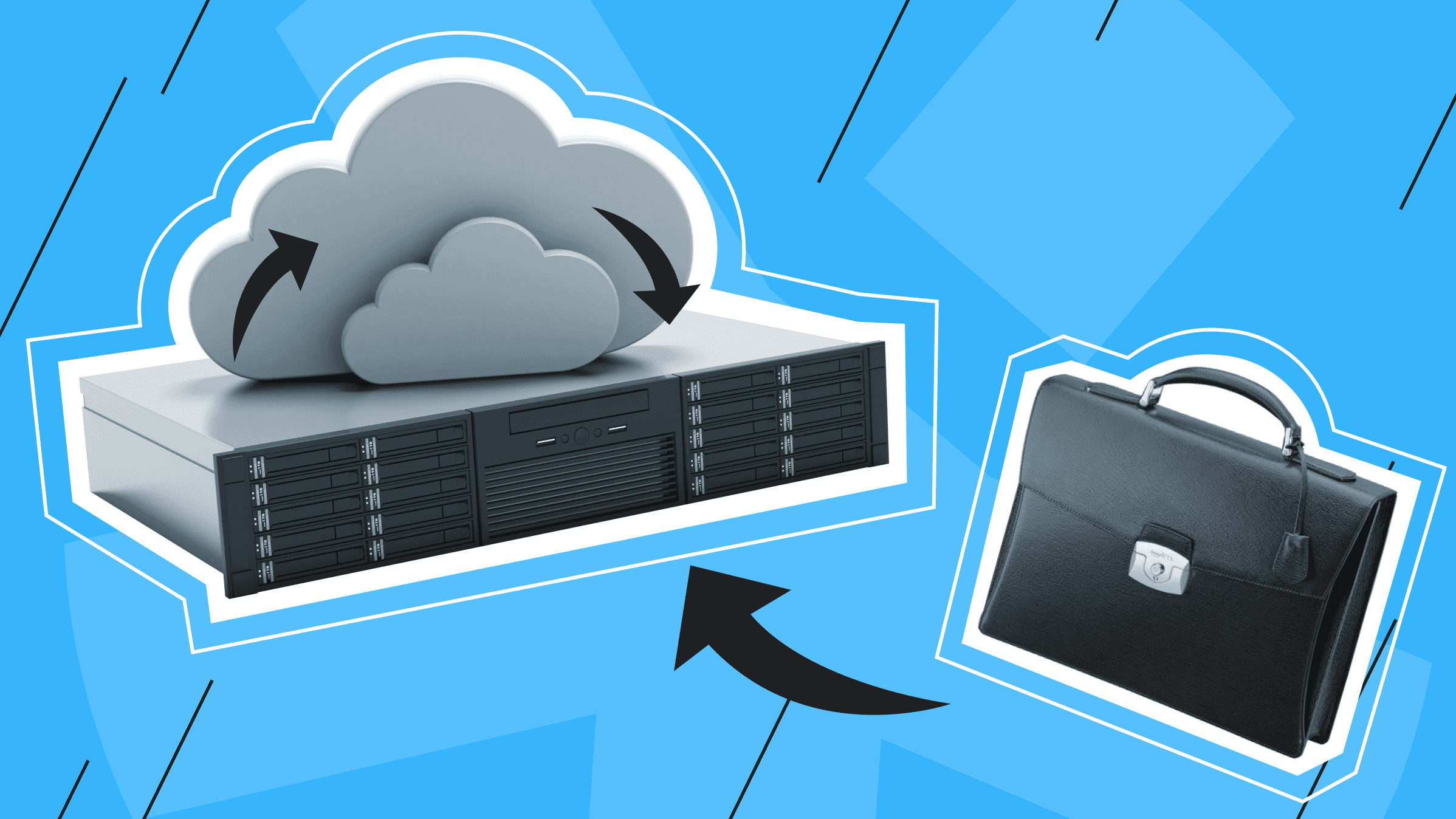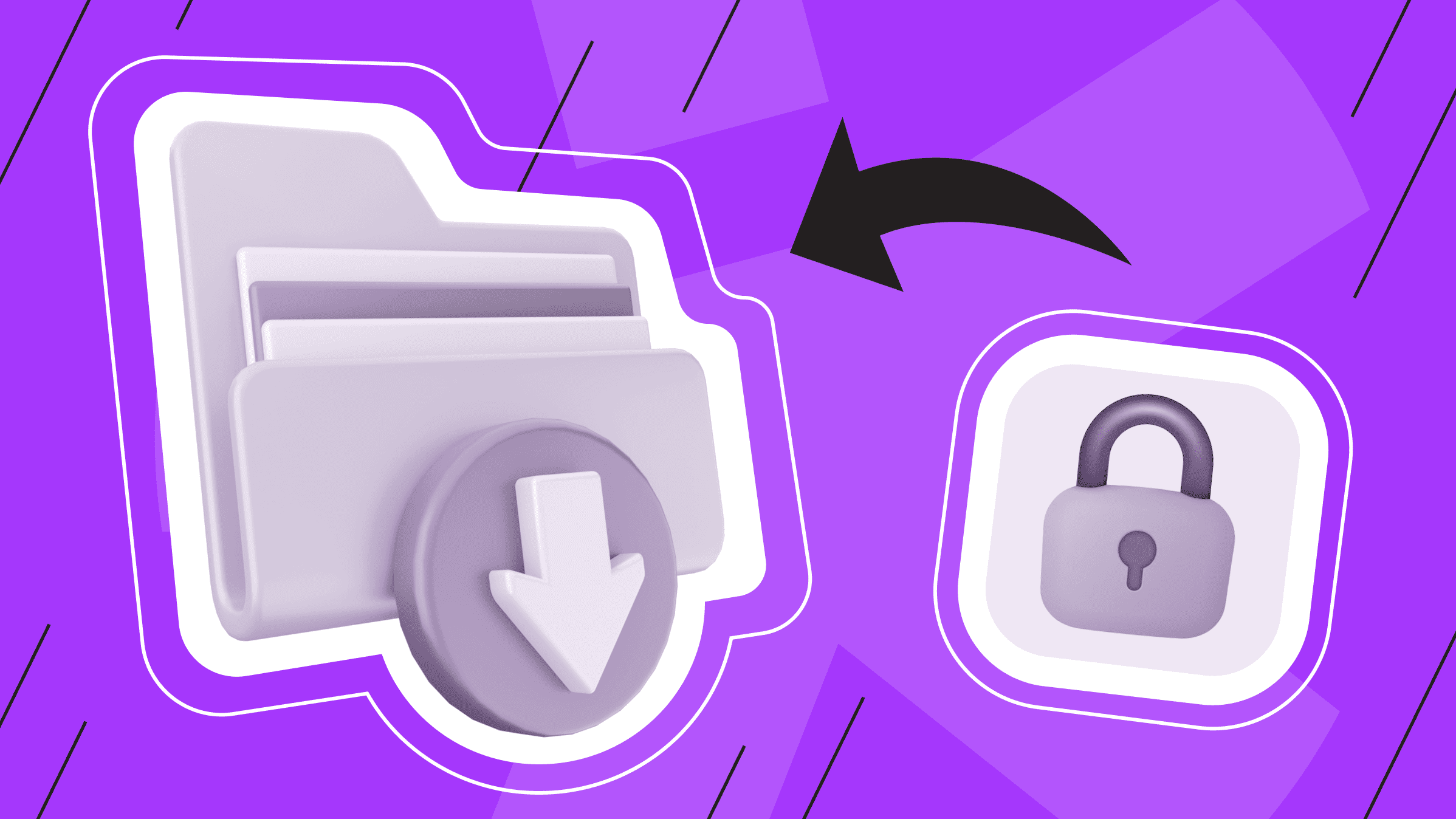
In the modern world of IT and cyber threats, it is essential to protect your data and, if it is lost, restore it from a backup copy. By maintaining an off-site backup of your data, you avoid the destruction of your original data and backups in the event of a physical disaster such as theft, fire, or flood or a digital threat such as a cyberattack or network infection by malware. In this article, we will discuss backup and disaster recovery and the types and importance of these two concepts.
Backup and Disaster Recovery Overview

What is backup and disaster recovery?
Backup and disaster recovery (BDR) are two interdependent activities to ensure business continuity:
- Backup: Regular creation and updating of additional copies of files and storing them in one or more remote locations.
- Disaster recovery: Using copies to continue or resume operations in the event of data loss or corruption.
Ensuring business continuity requires a reliable and proven backup and disaster recovery plan, which we will discuss later. And you should never allow yourself to neglect backup or disaster recovery.
It takes hours and even days to recover lost data. At best, this will interrupt employees' work, which is dependent on technology and lost data, and at worst, you risk losing customers forever.
Considering the time and money you can lose, investing in backup and disaster recovery is entirely worth it.
What Is the Difference between Backup and Disaster Recovery?
Backup and disaster recovery are essential parts of data management and protection strategies, but they serve different purposes and require different approaches.
The following sections will examine the differences between backup and disaster recovery.
Backup
Backup is the process of creating copies of data in order to protect against data loss due to accidental deletion, hardware failure, data corruption, or other problems.
|
Criteria |
Description |
|
Objective |
The objective of a backup is to create a redundant copy of data that can be restored in the event of data loss or corruption. Backups are typically stored separately from the main data source to provide redundancy and availability. |
|
Application area |
Backup aims to create copies of data to protect against data loss. |
|
Deadlines |
Backups are typically performed regularly (daily, weekly). |
|
Infrastructure |
Backup solutions may involve storing data locally, in the cloud, or using a combination of both. |
Disaster Recovery
Disaster recovery (DR) includes the processes, policies, and procedures for restoring data, systems, and infrastructure after a catastrophic event or significant failure affects normal operations.
|
Criteria |
Description |
|
Objective |
The disaster recovery objective is to minimize downtime, data loss, and business impact in the event of a disaster, such as a natural disaster, cyberattack, hardware failure, or human error. Disaster recovery plans typically include data replication, failover, and recovery strategies to ensure business continuity. |
|
Application area |
Disaster recovery includes broader strategies for restoring data, systems, and operations after a disaster. |
|
Deadlines |
Disaster recovery involves proactive planning and reactive responses to restore operations after a disaster occurs. |
|
Infrastructure |
Disaster recovery often includes redundant infrastructure, failover systems, and geographically distributed data centers to ensure resiliency and availability. |
Backup and Disaster Recovery Synergy
Although backup and disaster recovery have different objectives, they often work together to form complex data protection strategies. Backup data can be a critical component of disaster recovery plans, providing the data needed to restore systems and operations during a disaster. In addition, backup solutions can include features such as data encryption, versioning, and retention policies to support disaster recovery objectives such as compliance and data integrity.
To summarize, although backup and disaster recovery serve different purposes, they are both important components of a strong data protection strategy. They work together to ensure availability, integrity, and business continuity in the face of various threats and challenges.
Data Types and Data Protection Importance
Using appropriate data backup and disaster recovery strategies is necessary to protect data from being lost, ensure business continuity, and comply with regulatory requirements. Identifying and protecting various types of critical data allows companies to minimize the impact of data loss and ensure rapid continuity and recovery of operations.
Reliable storage for backups of your project or personal use. is*hosting guarantees data protection.
Data Types for Backup
Depending on the nature and location of storage, data is divided into the following types:
|
Data types |
Examples |
|
Business Critical Data |
Losing this data can significantly disrupt operations. |
|
Application Data |
Such data should be backed up to enable quick recovery and application configuration. |
|
System Data |
Backing up system data helps restore systems to their previous state after problems occur. |
|
User Data |
|
|
Virtual Machine Images |
Backing up virtual machine images ensures quick recovery of the entire virtual environment. |
|
Cloud Data |
To prevent data loss due to cloud service failures, data must be backed up. |
|
Source Code and Development Data |
Software companies need to have backup copies of source code and development environments to protect against loss of intellectual property. |
Data Protection Importance
Data protection is critical for several reasons:
- Business continuity. Data protection ensures business continuity even in the event of data loss or system failure.
- Financial security. Data loss can result in significant financial losses due to downtime, recovery costs, and lost sales. Good data protection reduces these risks.
- Correspondence. Many industries have regulations that require the secure processing and storage of information. Strong data protection helps companies comply with these regulations and avoid legal penalties.
- Reputation management. Data loss or leakage can damage a company's reputation. Data protection helps maintain customer trust and the company’s reputation.
- Intellectual property. For many businesses, data is intellectual property, sensitive information needed to gain a competitive advantage. Protecting this data is essential to preserving valuable company assets.
Backup and Disaster Recovery Solutions

Choosing the proper backup and disaster recovery solution depends on your organization's needs and constraints. While cloud solutions provide scalability and remote protection, local solutions offer fast access and control and hybrid solutions balance the two of them and provide comprehensive data protection and business continuity.
Local Solutions
Local backup and disaster recovery solutions for data are the storage on physical devices in the same location as the primary data. This method allows you to access backups quickly and often makes management and control easier.
- External HD. External hard drives can be easily connected to individual computers or servers. They are good for personal use and for storing critical backups.
- Network Attached Storage (NAS). These file storage devices are connected to a network, allowing multiple users to share centralized storage space to retrieve data. NAS are scalable and can provide automatic data backup and synchronization.
- Local servers. Special dedicated backup servers for storing data, on which specialized software is installed, allow you to automate the backup process. They are suitable for medium and large enterprises.
- Tape storage. Tape backup is a reliable, cost-effective solution for long-term data archiving with a long lifespan and less susceptibility to data corruption.
- Disk-to-disk (D2D) backup. D2D – data backup from one disk storage system to another. This method provides faster backup and recovery times than tape backups.
Cloud Solutions
Cloud backup and disaster recovery use remote servers managed by third-party service providers. This solution offers enormous advantages over on-premises backup and disaster recovery methods because it provides scalability, flexibility, and data protection outside the enterprise.
- Cloud backup services. These services automatically back up your data and provide incremental backups, data encryption, and easy access from anywhere.
Examples: Amazon S3, Google Cloud Storage, Microsoft Azure Backup.
- Disaster Recovery as a Service (DRaaS). DRaaS involves replicating and hosting physical or virtual servers in a third-party service provider's data center. To ensure business continuity in the event of a disaster, the service provider manages failover processes.
Examples: Zerto, Veeam, IBM Resiliency Services.
- Cloud storage gateways. These gateways provide integration of cloud storage and local IT environments. They act as a bridge, allowing local data to be backed up to the cloud.
- Managed backup services. Managed backup and disaster recovery services offer businesses a reliable, scalable, and cost-effective data protection solution. These services often include monitoring, reporting and support, freeing businesses from the burden of managing backups. By leveraging the expertise of managed service providers, companies can ensure their critical data is secure, reliable, and quickly recovered when problems arise.
Hybrid Solutions
Hybrid backup and disaster recovery solutions combine local and cloud approaches, providing the benefits of both. This approach offers flexibility, improved data protection, and optimized cost management.
Local backup with cloud replication. Initially copy data to local devices (NAS), then replicate the backup to the cloud for off-site protection, allowing for fast local recovery and long-term cloud storage.
Cloud storage gateways with local caching. These gateways store frequently accessed data locally and less frequently accessed data in the cloud, improving performance while maintaining cloud security and scalability.
Integrated backup solutions. Some solutions provide an end-to-end approach, offering management of both on-premises and cloud backups on a single platform.
Examples: Veeam Backup & Replication and Acronis Cyber Backup.
Multi-cloud disaster recovery solutions. Data and applications are replicated across multiple cloud environments, reducing vendor lock-in, increasing resiliency, and improving recovery capabilities.
Backup and Disaster Recovery Services

A comprehensive data management strategy includes backup and disaster recovery services and software that provide businesses with peace of mind by ensuring that data is available, consistent, and resilient, regardless of various threats and challenges.
Only by carefully evaluating professional backup and disaster recovery services, considering key features and cost considerations, and choosing a provider that meets your business requirements can you ensure that your data and systems are protected, resilient, and prepared for any unexpected events or failures. Below, we give some more information about some services and popular solutions for backup and disaster recovery.
Backup and Disaster Recovery Plan
A well-designed backup and disaster recovery plan is essential to ensure data availability, business continuity, and resilience in the face of various threats and challenges. Below we provide an overview of the importance of a complex plan, its essential components, and steps for development and implementation.
Complex BDR Plan Importance

As we mentioned earlier, although backup and disaster recovery have different objectives, it is only through their synergy that it is possible to ensure availability, integrity, and business continuity in the face of various threats and challenges. The importance of a complex backup and disaster recovery plan is reflected in the following benefits:
- Downtime minimization.
- Data protection.
- Ensuring business continuity.
- Requirements compliance.
To develop an effective backup and disaster recovery plan, you need to know and follow these steps:
- Business requirements assessment. Determine business requirements, priorities, and objectives for backup and disaster recovery based on data criticality, compliance requirements, budget constraints, and organizational goals.
- Gathering information from stakeholders. Engage stakeholders from across the organization, including IT staff, business units, senior management, and external partners, in order to gather information and insight into backup and disaster recovery needs and priorities.
- Development of documentation for the plan. Create a complex BDR plan that includes risk assessments, recovery objectives, backup procedures, disaster recovery, and infrastructure redundancy measures.
- Installation of management and supervision. Create accountability, compliance, and ongoing management of backup and disaster recovery.
- Implementation of technological solutions. Implement backup and disaster recovery technologies that meet your organization's needs and objectives: backup software, replication tools, data center redundancy, and cloud services.
- Conducting staff training. Provide training and awareness opportunities to staff and stakeholders so they know their roles and responsibilities during a disaster. It is also essential to conduct exercises and simulations regularly to test the effectiveness of BDR techniques and build confidence in response capabilities.
- Regular inspection and updating. Continuously review and update your backup and disaster recovery plan to reflect changes in business requirements, technology, infrastructure, and regulations. Ensure the plan remains relevant and effective against changing threats.
By following these steps and implementing a complex backup and disaster recovery plan, organizations can protect their data, ensure business continuity, and mitigate the impact of unexpected events or failures.
Backup and Disaster Recovery Process

The backup and disaster recovery process is an essential component of a complex data management strategy that ensures data availability, integrity, and resilience in the face of various threats and challenges. Below is an overview of the steps in the backup process and disaster recovery best practices, including helpful recommendations.
Backup Process Steps
The backup process includes several steps to ensure that duplicate data is successfully created and stored to protect it from loss. The backup process is a clear establishment of backup policies that define backup frequency, retention periods, storage locations, and verification processes.
- Define critical data.Determine which data and systems are critical to your organization's operations and prioritize them for backup. These include databases, applications, documents, configurations, and other important files.
- Select a backup method.Choose the appropriate backup methods based on data types, storage requirements, and recovery objectives. Standard backup methods include full, incremental, and differential backups.
- Schedule regular backups.Create a backup schedule that suits your organization's needs and objectives. Schedule regular, consistent backups, such as daily, weekly, or hourly backups, depending on how frequently your data changes and how critical it is.
- Choose a backup storage.Choose backup storage (local, cloud, hybrid) that provides redundancy and resiliency. Use multiple backup storage locations to minimize the risk of data loss due to hardware failures or accidents.
- Implement a backup solution.Deploy backup solutions that meet your organization's data protection, scalability, and manageability needs. Make sure your backup solutions offer features like encryption, deduplication, and automatic scheduling.
- Monitor backup operations.Monitor backup operations regularly to ensure they are performing as expected and that backup completion is successful. Monitor backup logs, alerts, and notifications to quickly identify and resolve any problems or failures.
- Verify backup integrity .Periodically verify the integrity of your backup by running data recovery tests and testing the integrity and usability of your backups. Test the effectiveness and reliability of your backups by testing several recovery scenarios.
- Automate backup tasks.Automate backup tasks to minimize manual intervention and ensure consistent, reliable backups.
By following these steps in the backup process, organizations can ensure duplicate data is created and stored securely and efficiently. This protects against loss and ensures timely recovery in the event of data corruption, hardware failures, or other unexpected events.
Get the most out of your budget with our affordable, efficient VPS solutions. Fast NVMe, 30+ countries, managed and unmanaged VPS.
Disaster Recovery Process Best Practices
The disaster recovery process, like the backup process, consists of stages based on the implementation of the components of the backup and disaster recovery plan:
- Setting up communication protocols.Establish communication protocols and channels to coordinate disaster response efforts and disseminate critical information to stakeholders, employees, and customers.
- Risk assessment and planning.Conduct a risk assessment to identify potential threats and vulnerabilities as your plan outlines. Use the disaster recovery plan you created.
- Defining the recovery objective.Define Recovery Time Objectives (RTO) and Recovery Point Objectives (RPO) for critical systems and data. Define acceptable downtime and data loss thresholds based on business requirements and priorities.
- Using the implemented backup infrastructure.Deploy redundant infrastructure and failover systems to ensure continuity of operations in the event of hardware failures, system failures, or disasters. These may include redundant data centers, backup VPS servers, and network connections. Use them to minimize downtime and data loss.
- Regular data backup.Maintain regular backups of critical data and systems to facilitate recovery in the event of data loss or corruption. Ensure your backup data is securely stored and quickly accessible in an emergency. We recommend maintaining off-site data backups in geographically diverse locations to protect against local disasters such as fires, floods, or earthquakes.
- Testing disaster recovery plans.Conduct regular testing and training of disaster recovery plans to verify their effectiveness and identify areas for improvement. Test various recovery scenarios, including partial and full system failures, to ensure preparedness for real-life disasters.
- Staff and stakeholder training.Conduct training and awareness programs for staff and stakeholders to ensure they understand their roles and responsibilities during a disaster. Conduct tabletop exercises and simulations to practice response procedures and build confidence in the recovery process.
- Process documentation.Document detailed recovery procedures, including step-by-step instructions. Record plans, decisions of all stages, and actual practices of the disaster recovery process. This will help you respond quickly at any stage in the future.
Conclusion
Backup and disaster recovery are essential to a robust data protection and management strategy, business continuity, and effective risk mitigation. It's important to know how to develop a comprehensive backup and disaster recovery plan and, if necessary, use the services of the best BDR professionals. By investing in reliable storage solutions and staying abreast of new trends and technologies, organizations can protect their data and operations from unexpected events and disruptions.
Data Storage
Store your backups or personal data in a safe place - is*hosting takes care of the protection.
Get $2.00/mo

